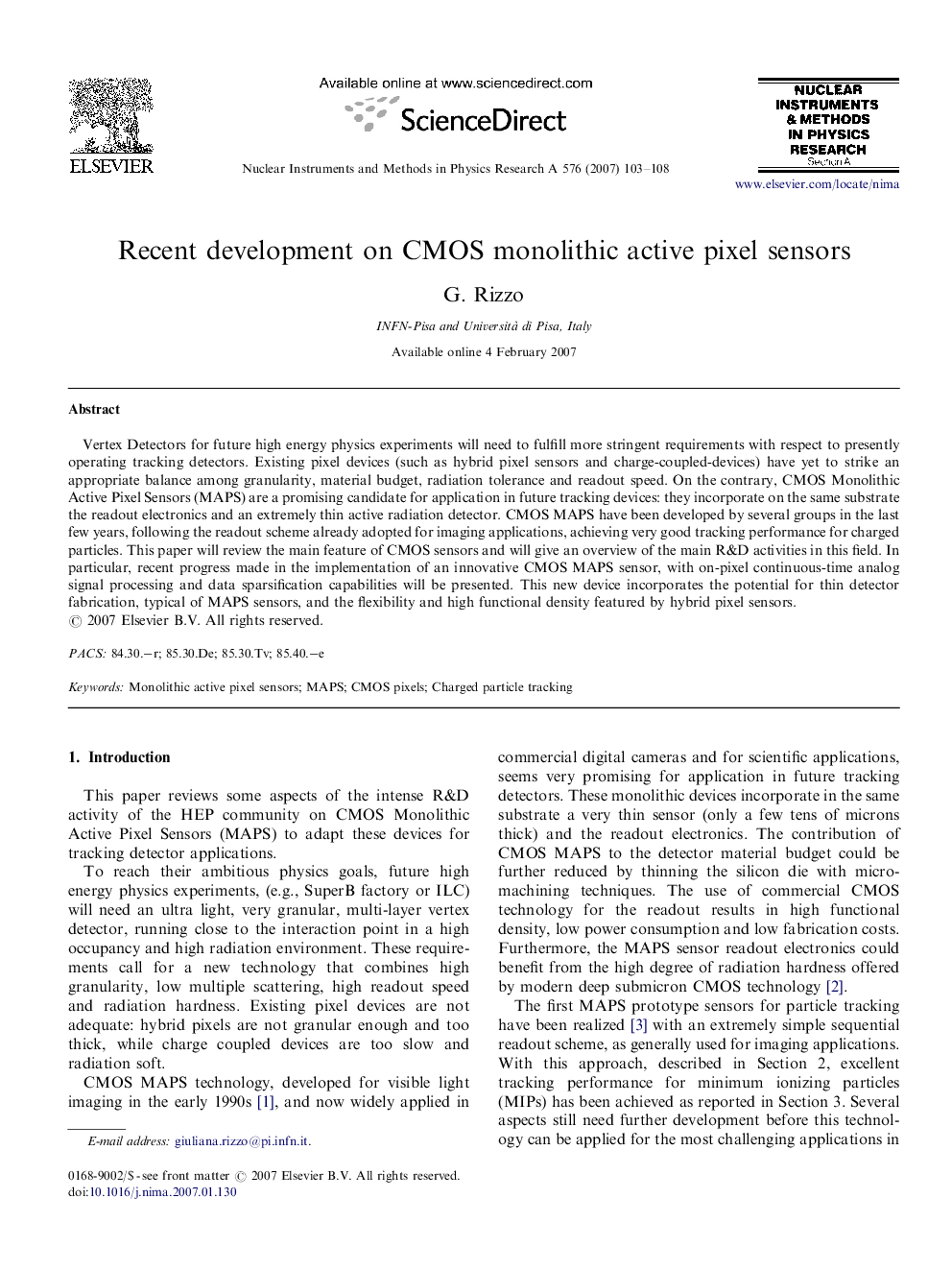| Article ID | Journal | Published Year | Pages | File Type |
|---|---|---|---|---|
| 1830844 | Nuclear Instruments and Methods in Physics Research Section A: Accelerators, Spectrometers, Detectors and Associated Equipment | 2007 | 6 Pages |
Vertex Detectors for future high energy physics experiments will need to fulfill more stringent requirements with respect to presently operating tracking detectors. Existing pixel devices (such as hybrid pixel sensors and charge-coupled-devices) have yet to strike an appropriate balance among granularity, material budget, radiation tolerance and readout speed. On the contrary, CMOS Monolithic Active Pixel Sensors (MAPS) are a promising candidate for application in future tracking devices: they incorporate on the same substrate the readout electronics and an extremely thin active radiation detector. CMOS MAPS have been developed by several groups in the last few years, following the readout scheme already adopted for imaging applications, achieving very good tracking performance for charged particles. This paper will review the main feature of CMOS sensors and will give an overview of the main R&D activities in this field. In particular, recent progress made in the implementation of an innovative CMOS MAPS sensor, with on-pixel continuous-time analog signal processing and data sparsification capabilities will be presented. This new device incorporates the potential for thin detector fabrication, typical of MAPS sensors, and the flexibility and high functional density featured by hybrid pixel sensors.
